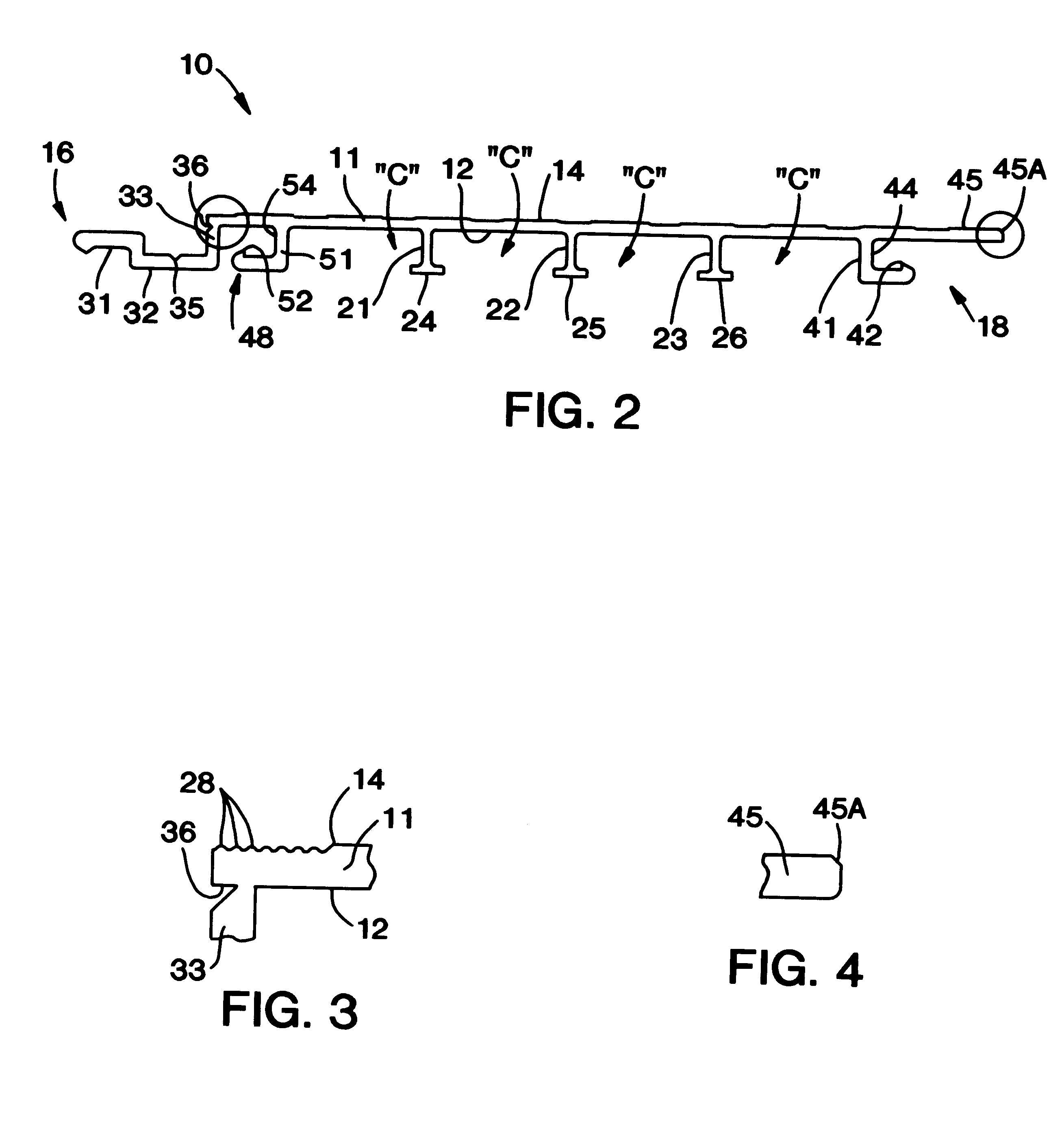Modular cladding element
- Summary
- Abstract
- Description
- Claims
- Application Information
AI Technical Summary
Benefits of technology
Problems solved by technology
Method used
Image
Examples
Embodiment Construction
Referring now specifically to the drawings, a modular cladding element according to the present invention is illustrated in FIG. 1 and shown generally at reference numeral 10. The cladding element 10 is particularly applicable for being assembled together with a number of other elements to clad the surface of a wood deck "D" or other underlying structure. The cladding elements 10 cooperate to provide a generally maintenance free, wear-resistant surface that is attractive, easy to clean, convenient to install, and relatively inexpensive. Preferably, each cladding element 10 is integrally molded of a durable PVC plastic. A single cladding element 10 is described below with reference to FIG. 2.
The cladding element 10 includes a panel 11 with inside and outside major surfaces 12 and 14, and complementary male and female fasteners 16 and 18 extending along respective opposing sides. A number of spaced longitudinal support ribs 21, 22, and 23 are formed with the inside major surface 12 of...
PUM
| Property | Measurement | Unit |
|---|---|---|
| Distance | aaaaa | aaaaa |
Abstract
Description
Claims
Application Information
 Login to View More
Login to View More - R&D
- Intellectual Property
- Life Sciences
- Materials
- Tech Scout
- Unparalleled Data Quality
- Higher Quality Content
- 60% Fewer Hallucinations
Browse by: Latest US Patents, China's latest patents, Technical Efficacy Thesaurus, Application Domain, Technology Topic, Popular Technical Reports.
© 2025 PatSnap. All rights reserved.Legal|Privacy policy|Modern Slavery Act Transparency Statement|Sitemap|About US| Contact US: help@patsnap.com



